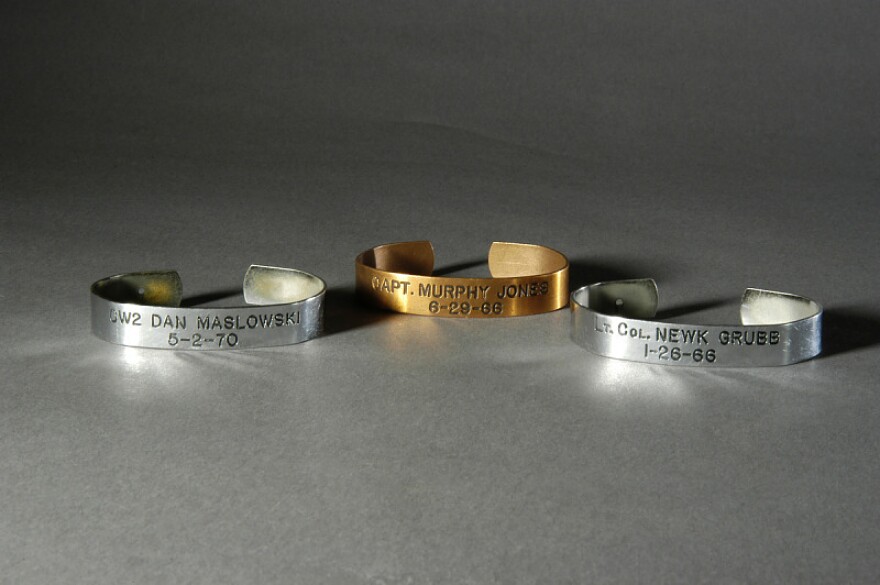“Even those people who were against the Vietnam War could identify with us being held captive,” former prisoner of war Jack Ensch once observed. “The torture and the mistreatment – nobody could argue that wasn’t wrong.” Vietnam indeed divided our country as it had not been divided since the Civil War, but whether you supported the war or opposed it, the POW-MIA bracelet phenomenon allowed Americans a means of separating feelings toward the conflict, from feelings toward soldiers.
So, remember P.O.W.s Never Have a Nice Day. I’m Joel Rhodes “Telling History.”
Just over 700 American servicemen were prisoners of war in Vietnam and roughly 1,900 listed as missing in action. To draw public attention to their plight, nickel-plated and copper bracelets – engraved with a captured or missing man’s name, rank, branch of service, and date of loss – gave Americans “a guy of their own” to wonder about, worry over, pray for, and commemorate.
The bracelets were the brainchild of college students in Voices in Vital America (VIVA). This Los Angeles-based student organization searched for positive ways to support U. S. soldiers that might also counterbalance campus antiwar protests. In 1969, television personality and politician Bob Dornan introduced VIVA members to both the POW/MIA issue and the idea of wearing a bracelet as a constant reminder of their sacrifices.
Having virtually no budget initially, they worked with an engraver willing to craft a limited run of 1,200 bracelets, made from donated materials, for a percentage of any proceeds. Two versions were offered: nickel-plated for students and copper aimed at adults. Prices were based on the cost of a student movie ticket in 1970 – $2.50 – with the copper bands going for $3.00 due to their perceived medicinal value for overcoming “tennis elbow.”
The POW/MIA bracelet campaign officially kicked off on Veterans Day, November 11, 1970, with a Hollywood hotel press conference. The thin metal bracelets immediately swept the nation, touching a nerve transcending the era’s binary politics of hawk and dove.
Through distribution alliances with POW/MIA organizations, orders snowballed from 500 a week to 1,000, then 10,000 a week, and eventually, at one point reaching 12,000 per day. Celebrities ranging from Bob Hope and John Wayne to Dennis Hopper proudly wore them, as did Sonny and Cher on their television show. During the 1972 presidential campaign, bracelets made strange bedfellows of candidates George Wallace, Richard Nixon, and George McGovern. When John Ensch was imprisoned at the infamous Hanoi Hilton, he brought news to fellow POWs – tapped in code between cells – of how millions of Americans were wearing bracelets with their names on them.
Many wearers assumed they were the only person who had that serviceman’s name. However, since roughly 2,600 Americans were designated POW or MIA, out of the five million bracelets ultimately in circulation, some 1,900 were produced for every serviceman. Those who shared a name are known to each other as “bracelet families.”
By the late 1970s, when most Americans resigned themselves to the reality that everyone who could come home alive, already had come home, they took their bracelets off. Many mailed theirs with a note of thanks to repatriated men or their families. Etiquette dictated one should never take off or send the bracelet before a complete accounting had been made. Some snapped it in two pieces, sending one half and keeping the other; a ceremony often solemnly performed at the Vietnam Veterans Memorial Wall.



